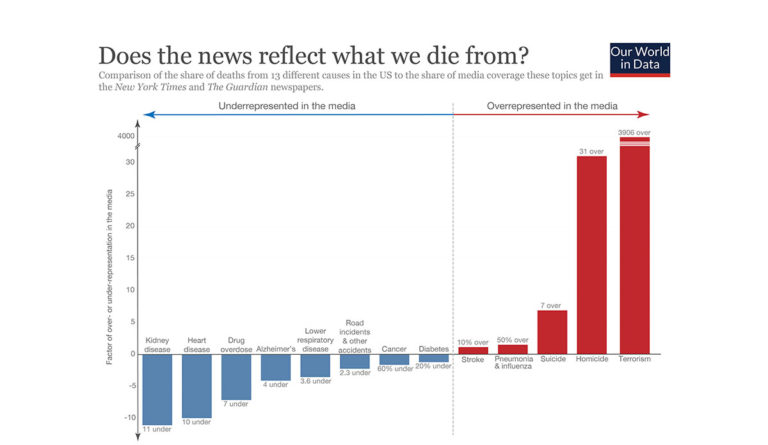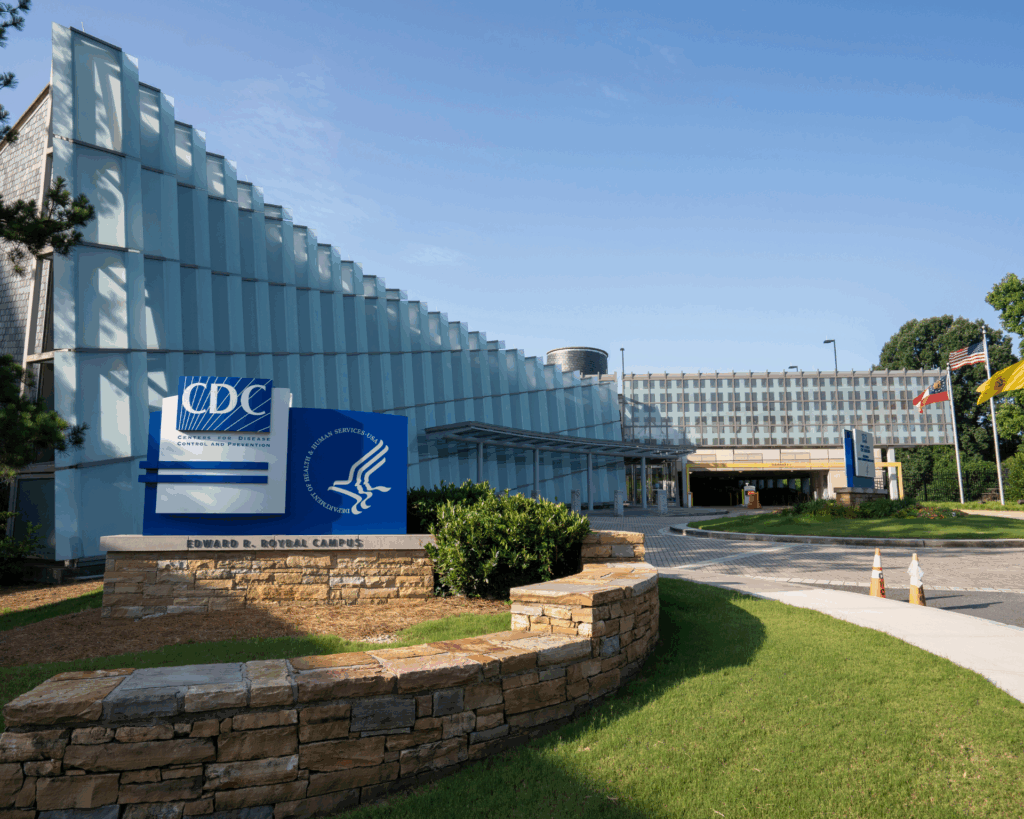Death Watch
Does the news reflect what we die from? We have been conditioned to fear the exceedingly rare and ignore what’s more likely to kill us.

Read Time: 1 minutes
Published:
There’s an old phrase in journalism: ‘if it bleeds, it leads.’ So, as the title of the above graph asks, does the news reflect what we die from?
For each cause of death, Our World in Data calculated its share of total deaths, as compared to the average annual coverage in The New York Times and The Guardian between 1999 and 2016. As seen above, stories about terrorism and homicide were drastically over-covered (in red). Major public health concerns like cancer, diabetes, and heart disease were far less likely to receive attention.
While newspapers and cable news stations certainly prioritize fear-based stories, consumer expectations compound the situation. Consumers crave sensation, and journalists are happy to provide it, creating a vicious cycle. There is little incentive–financial or otherwise–to take on the medical issues that matter. As a result, we have been conditioned to fear the exceedingly rare and ignore what’s more likely to kill us.
Databyte via Does the news reflect what we die from? Our World in Data, 2019.



